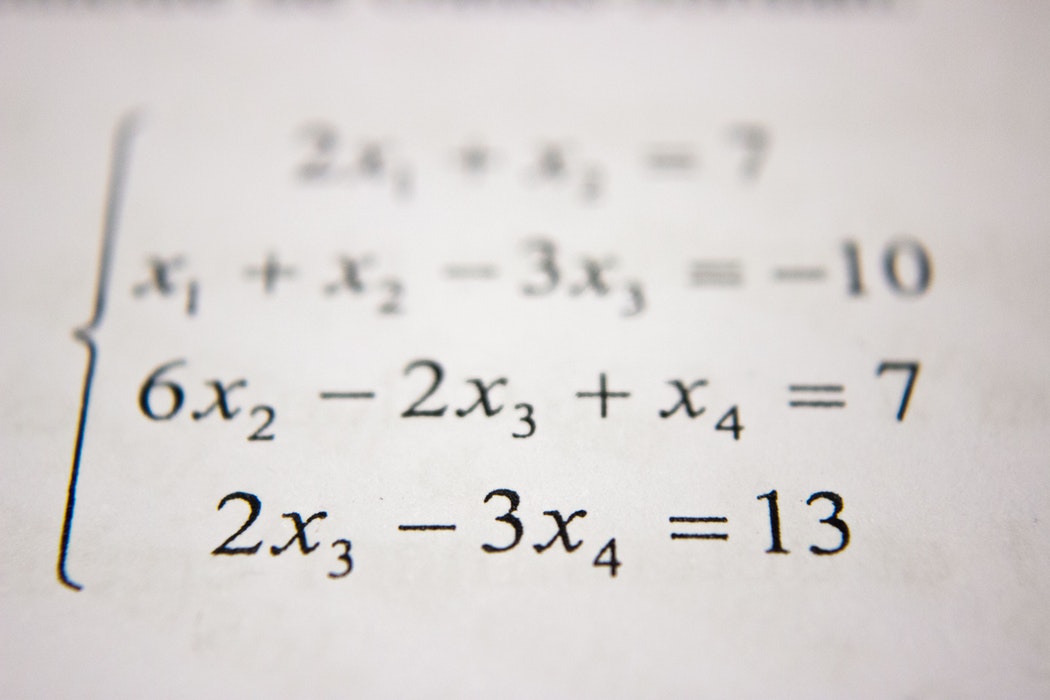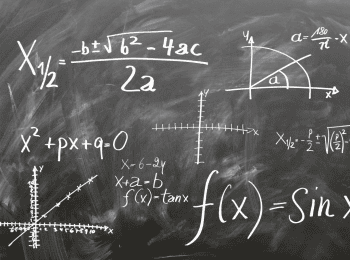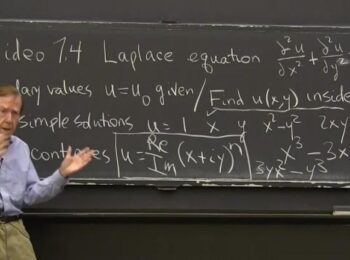Image Source: Pixabay.com
Let’s go ahead and get it out of the way now: unity is just another way of saying “one.” So, while Roots of Unity might sound like an awesome band name, it’s just a fancy way of saying “What are the mathematical roots of one?” The answer might sound straightforward if you’ve never been exposed to higher math – one can, apparently, only have two roots: 1 and -1.
However, if you start getting into the cube, fourth, and higher degrees of roots, you might need to think a little more complex. Also, you need to think about imaginary numbers.
Imaginary Numbers
What’s the square root of -1?
Don’t try to answer that question in terms of numbers you’re familiar with; you won’t be able to find one. This is because it’s impossible to square anything and get a negative number. Multiplying two like-signed integers together always produces a positive result. The only way to get a negative number is to multiply different-signed numbers.
Instead, when you want to write the square root of a negative number, you express it in terms of the square root of -1. This unit is called i. This unit cannot be combined directly or added to real numbers. The expression 2 + 3i, for example, is the simplest form.
Otherwise, working with i is the same as working with standard variables, at least as far as writing it goes. The square root of -10, for example, is expressed as 10i, or 10 multiplied by i.
Operations with imaginary numbers are performed in the same fashion as others. It’s also possible to plot the points on a graph; all you have to do is change one of the axes to i instead of using y.
Imaginary numbers are part of complex numbers, expressed in the form of a + bi.
Therefore, going by what we’ve discussed so far, we can see that 1 has three square roots: 1, -1, and -i. Because i squared is -1, it naturally follows that -i yields 1 when squared. If you keep multiplying i by itself, you get the pattern i, -1, -i, 1. It also works in reverse.
In other words, i raised to the zeroth power is 1, i^-1 is -i, and so on.
Uses of Imaginary Numbers

Image via: Unsplash
The term “imaginary number” is a bit misleading. Originally it was intended as a disparaging remark toward the concept in the 16th century, but before that these numbers were called silent numbers.
Using imaginary numbers allows you to solve several different types of equations in practical applications, such as sine waves in electrical engineering. Without the existence of i and thereby the imaginary numbers, you could not plot negative numbers when it comes to square roots which would make the root mean square impossible and wreak havoc in AC graphs.
However, any graph that exists as a function of a sine or a cosine will have to deal with imaginary numbers. This includes other applications like computer science or brain wave imagery. Without the ability to chart sine waves, we could not accurately chart a patient’s brain activity, just as an example.
In average, everyday use, imaginary numbers indeed have little use, but if your line of work involves highly complex math such as electrical engineering, you should make it a point to study them. Even without the specialized need for this knowledge, even the act of learning it can be beneficial for the brain.
Formula for Calculating Roots of Unity
As with anything in math, there is a formula for calculating roots of unity in calculus. It’s called Euler’s formula and works closely with the unit circle. If you remember trigonometry, the unit circle will look somewhat familiar. You need to get used to thinking in terms of radians rather than degrees. For example, instead of a point being rotated 90 degrees, it’s pi/2 radians.
Euler’s formula holds that Un = e2k/n. By further extension, you also have the formula of e2i = cos(2)+ i sin(2) = 1.
The values of these equations mean:
Therefore, if you wanted to take the fifth root of unity, you would substitute 1, 2, 3, 4, and 5 for the value of k in the formula.
Complex Numbers and Conjugates
The conjugate of a complex number, when you combine them, creates the square of that number. For example, if you have the expression 3 + 5i, the complex conjugate is 3 – 5i. If you multiply them, you get 9, because the positive and negative 5i cancel one another out. When you’re working on the unit circle, these conjugate points are often mirrors of one another.
Therefore, you don’t always have to calculate every point. If you can find half of the solutions, you can infer the other half. You also know at least one of the values already when you’re calculating roots of unity in calculus: 1. If you treat the x-axis as the real number axis and the y-axis as imaginary, you’ll chart the point at (1, 0).
As mentioned, the shape formed by the points is dictated by which roots you want to find. A cube root makes an equilateral triangle centered around the origin point, and the other two points are conjugates of one another.
Looking at the Unit Circle and Graphing
If you plot points on a graph representing roots of unity, you can see that the points all form the vertices of a given shape directly related to the number of roots you’re looking for. Taking the fourth root, for example, gives you four points of a quadrilateral. Taking the fifth root gives you a pentagon, and so on.
Because of Euler’s formula and the nature of the roots of unity, you can only graph these points and express them in terms of complex numbers.
As an example, if you’re finding the fifth roots of unity and plugging them into Euler’s formula, you get the following:
All of these are expressed in terms of the sine and cosine of various points on the unit circle. If you were to travel all the way around the unit circle counterclockwise, you would get the number 1. Similarly, traveling clockwise would be the reverse.
Note the existence of complex conjugates creating mirrored points around the pentagon traced by the fifth roots of unity.
As you can see, the roots of unity are expressed only as complex numbers because of the presence of the variable i. Any set of these roots does contain 1 and -1 as well but also contains any number of variants including the complex numbers expressed in terms of Euler’s formula and the unit circle.
For any degree greater than three, the roots when plotted on a graph form the vertices of a polygon. It can be helpful to remember these when visualizing the relationship between the roots.
Polar Forms of Graphs
Although most of the time you’ll see equations written in Cartesian coordinate format, there’s another form that’s useful when dealing with the unit circle, and it makes it easier to track roots of unity: the polar form.
Instead of x and y, you have r and ?. R represents the radius of the line drawn from the origin point to the point in question. The Greek letter theta represents the angle. Remember that when you’re dealing with theta, you can add multiples of 2 and it won’t change the angle. This is the complete circumference of a circle expressed in radians.
Roots of Unity in Calculus
Finding the roots of unity in calculus is no different than finding the roots by using complex numbers in geometry or trigonometry. Because you’re using the sine and cosine functions, it’s almost identical to trigonometry, which itself is a prerequisite to understanding calculus. Trigonometric functions and the unit circle are vital tools in your knowledge.
Remember how to use the Euler formula and work with complex numbers, and you’ll be able to easily manage to find any set of the roots of unity you’re asked to find.
Final Thoughts

Image via: Unsplash
Knowing what the roots of unity are may seem like an exercise in superfluous knowledge, but there are some practical uses, such as in electrical engineering.
You can have as many roots of unity as you want, as long as you’re able to solve them using the Euler formula. However, when the numbers get higher, you may have to use a computer or calculator to chart them because they won’t be easily expressed in a ratio of pi.
The video may take a few seconds to load.
Having trouble Viewing Video content? Some browsers do not support this version – Try a different browser.






